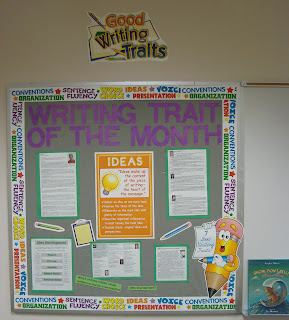I've decided to add a new feature in my classroom: The Metaphor of the Week. I want to really push my students to think metaphorically this school year, so I will be providing a weekly example. Eventually, I will have students assigned to create upcoming weeks' metaphors for the whole class, as well as individual metaphors for their writer's notebooks.
I--who will also be teaching my students to draw Mr. Stick (our writer's notebook "mascot")--will be illustrating each week's metaphor with an original Mr. Stick by me. I will be challenging my students to create their own (different) Mr. Stick drawings based on the week's metaphor.
In my new classroom, I've got two half-sized white boards on either side of my Interactive SmartBoard. I've decided one of these half-boards will hold my "Mr. Stick's Metaphor of the Week." Here is the metaphor/drawing I created for our first week of school. Click on it to see it larger:
I want the metaphors to all be about life, dreams, and education...so if anyone has any suggestions for upcoming weeks, please let me know what they are!
Here's to a fabulous first week of school with a brand new set of kiddos!
--Corbett






